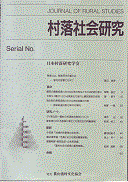Volume 8, Issue 1
Displaying 1-7 of 7 articles from this issue
- |<
- <
- 1
- >
- >|
-
2001Volume 8Issue 1 Pages 1-11
Published: 2001
Released on J-STAGE: August 02, 2013
Download PDF (9475K) -
2001Volume 8Issue 1 Pages 12-23
Published: 2001
Released on J-STAGE: August 02, 2013
Download PDF (9807K) -
2001Volume 8Issue 1 Pages 24-35
Published: 2001
Released on J-STAGE: August 02, 2013
Download PDF (9239K) -
2001Volume 8Issue 1 Pages 36-46
Published: 2001
Released on J-STAGE: August 02, 2013
Download PDF (9396K) -
2001Volume 8Issue 1 Pages 47-58
Published: 2001
Released on J-STAGE: August 02, 2013
Download PDF (9246K)
-
2001Volume 8Issue 1 Pages 59-60
Published: 2001
Released on J-STAGE: August 02, 2013
Download PDF (1709K) -
2001Volume 8Issue 1 Pages 61-62
Published: 2001
Released on J-STAGE: August 02, 2013
Download PDF (1858K)
- |<
- <
- 1
- >
- >|
